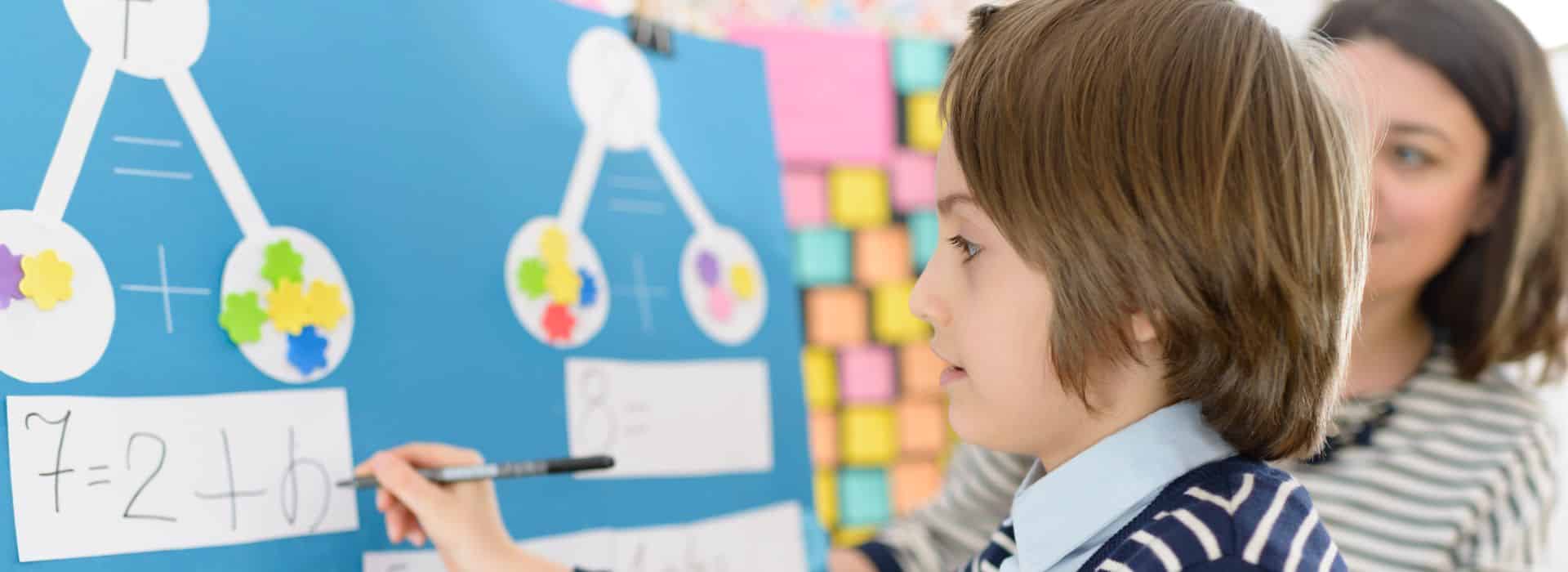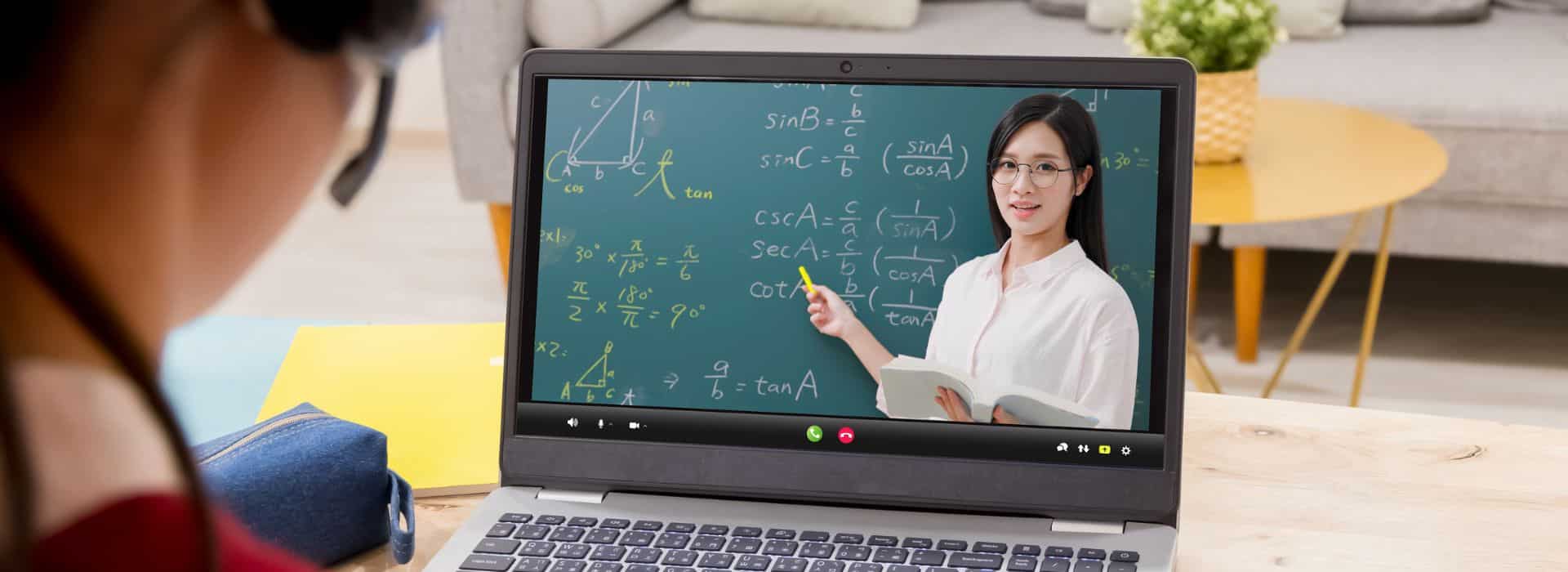Estimated reading time: 10 minutes

Understanding the BODMAS rules is crucial in Mathematics. This guide provides a clear definition, meaning, and practical examples to learn the BODMAS formula for both students and parents. You can master The BODMAS rule efficiently through questions and examples.
Understanding the BODMAS rules is crucial in mathematics. This guide provides a clear definition, meaning, and practical examples to learn the BODMAS formula for both students and parents.
BODMAS. Ok, what do we know about it? It’s an Acronym. It is used to solve arithmetic problems. And it has caused you many incorrect answers in the Maths classes. The BODMAS rule guides the mathematical operations through the BODMAS sequence. Unfortunately, handling the BODMAS rules in Maths can get a little confusing. Read on to find out!
What is the BODMAS rule?
So, you’ve likely heard about the BODMAS rule, right? It’s basically a sequence to solve Maths problems. When we talk about BODMAS, we’re talking about the order of operations. The BODMAS rule is essential in many mathematical problems. The full form of BODMAS is
- B – Brackets,
- O – Order of powers or roots,
- D – Division,
- M – Multiplication,
- A – Addition,
- S – Subtraction.
S – Subtraction. The BODMAS theory solves problems that have multiple operations. So when you see addition, multiplication, subtraction, and division together, you are prepared to find the correct answer following the proper sequence of operations.
When to use BODMAS?
Think of any time you’re faced with a maths problem that has a mix of operations. BODMAS is your roadmap to navigate it. It’s like your maths GPS!
Maths is all about logical interpretations and systematic solving of problems. Hence it requires a specific set of procedures to be observed. It is easy to perform one function, like addition, with two or three numbers. But if a question involves more than one operation, it can be confusing to solve the problem without guidance.
You can utilise the BODMAS formula whenever there is more than one operation in a mathematical equation or expression. We have to follow the set sequence so that the results are correct. We cannot just calculate from left to right or in a haphazard manner. The BODMAS rule in Maths identifies the correct order or sequence to be followed while solving the Maths problem.
DODMAS Rule
If you’re familiar with BODMAS, think of DODMAS as its close relative. DODMAS stands for Division, Order, Division, Multiplication, Addition, and Subtraction. You might be thinking, “Wait, why Division twice?
| D | Division ÷, / |
| O | Order of Square roots, indices, exponents and powers |
| D | Division ÷, / |
| M | Multiplication ×, * |
| A | Addition + |
| S | Subtraction – |
BODMAS vs PEMDAS
You might have heard of another term called PEMDAS used to solve mathematical expressions. It is a similar sequence of operations you must follow, just like the BODMAS theory. Let us look into what PEMDAS means:
- P – Parenthesis
- E – Exponents
- M – Multiplication
- D – Division
- A – Addition
- S – Subtraction
So it is nearly the same sequence of operations but with a different name. Why another name? Because some countries have specific terms for the operations. So ‘Brackets’ become Parenthesis, and ‘Of’ becomes Exponents. A critical difference between the BODMAS rule and PEMDAS is that in PEMDAS, multiplication should be done before division, unlike in BODMAS.
Conditions of BODMAS
You cannot understand Maths concepts without examples. And to understand the conditions of the BODMAS rule, we have some BODMAS examples below :
- If there is any bracket, open the bracket first, then add or subtract the terms.
x + (y + z) = x + y + z,
a + (b – c) = a + b – c
- If there is a negative sign, open the bracket first, then multiply the negative sign with each term inside the bracket.
x – (y + z) ⇒ x – y – z
- When there is a term outside the bracket, multiply it with each of the terms inside the bracket
a (b + c) = ab + ac
Easy Ways to Remember BODMAS Rules
Specific tips can help you remember the conditions and rules of BODMAS. The meaning of BODMAS and the BODMAS rule questions are a convenient way to remember the rules:
- ALWAYS simplify the brackets first.
- If there are any exponents and roots, solve those.
- Perform division or multiplication (go from left to right)
- Perform addition or subtraction (go from left to right)
Explain BODMAS with examples
After understanding the BODMAS rule, it is time to test the waters and apply the BODMAS formula to Maths questions. But, again, keep the conditions in mind to get the correct answer.
428 – 60 ( 6 x 7 – 12 x 4)
428 – 60 (42 – 48)
428 – 60 – 6
The property of integers suggests – and – becomes +, therefore
428 – 66 = 362
Thus, the answer is 362.
How to deal with brackets?
Brackets mean simplifying terms inside the brackets can be done directly before any other calculation. We must perform the operations inside the bracket in the order of division, multiplication, addition and subtraction.
Note: The order of brackets to be simplified is (), {}, [].
The following BODMAS examples will help you grasp the rule of BODMAS brackets:
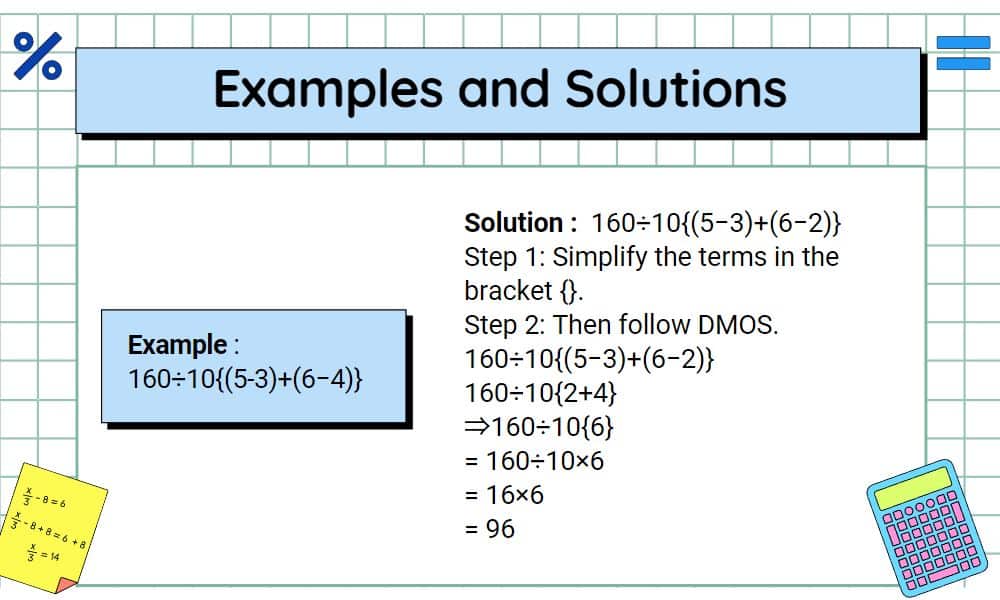
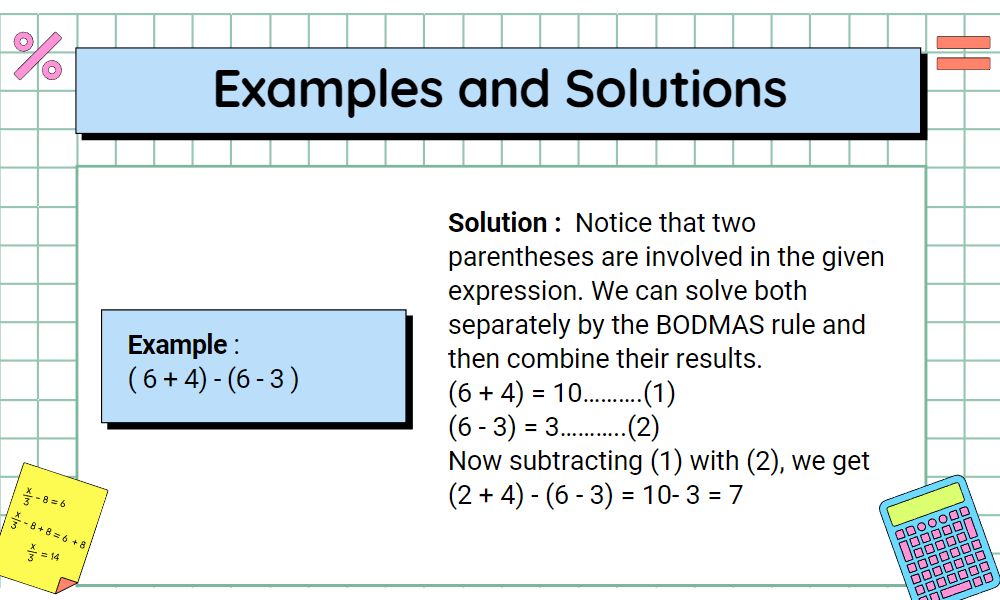
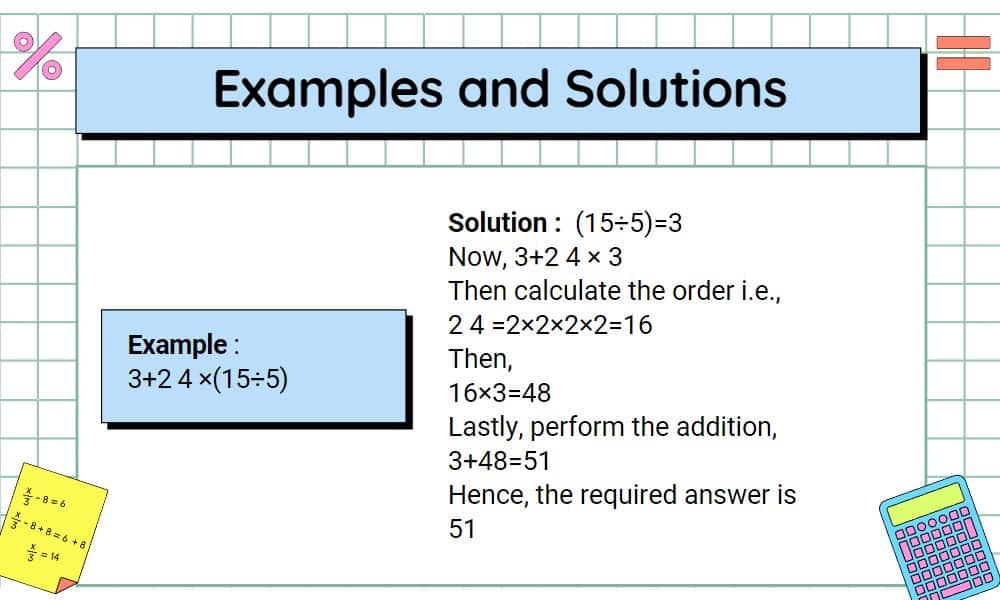
BODMAS without Brackets
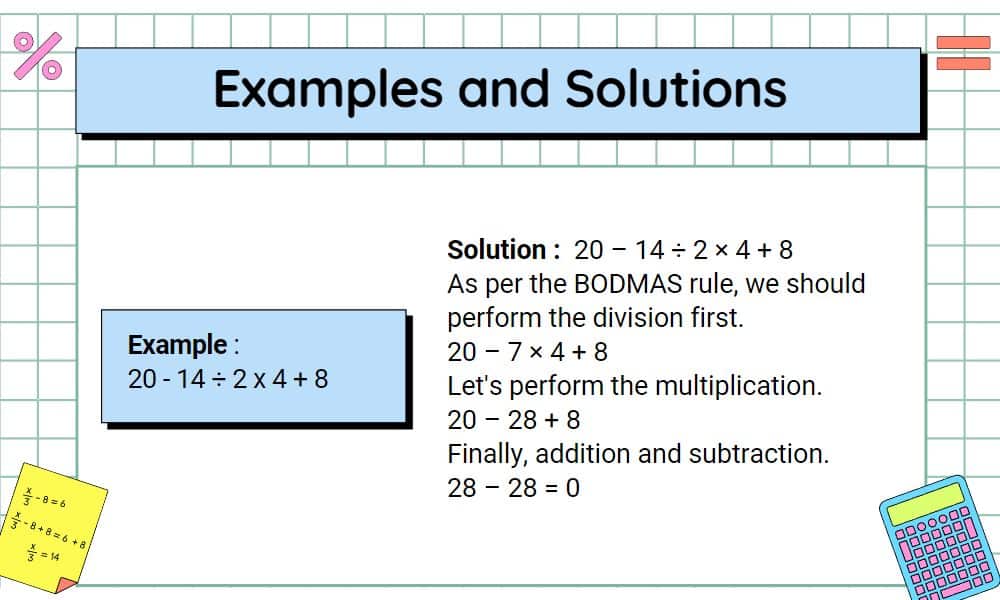
DODMAS or BODMAS?
Both are paths leading to the same destination. The idea is to understand the hierarchy of operations in maths. Whether you choose DODMAS, BODMAS, or even PEMDAS (for our friends across the pond), the essential thing is the structured approach to crunching those numbers.
The BODMAS Rule: Common Mistakes & How to Avoid Them
We’ve all been in that spot where we confidently solve a problem, only to realise our answer is…well, way off the mark. More often than not, this happens because of simple errors while applying the BODMAS rules. Let’s chat about some of these common mistakes and how to avoid them.
Brackets First, Always:
One of the classic errors is diving straight into multiplication or division and overlooking the brackets. Remember, those brackets (whether they’re round, curly, or square) take priority. Always resolve what’s inside them first.
Mixing Up the Order:
After brackets, it’s the orders (powers and square roots). Then, you move to division and multiplication (from left to right), followed by addition and subtraction (again, left to right). Mixing up this sequence? You’ll end up in a mathematical confusion.
Forgetting Left to Right Rule:
Say you have both multiplication and division in a problem. Don’t just start anywhere. Begin from the left and work your way to the right. The same goes for addition and subtraction.
Overcomplicating:
Keep it simple. Break down complex problems into smaller parts, tackle them step by step, and you’re less likely to make a mistake.
Not Double-Checking:
Once you’ve solved the problem, take a moment to go over it. A quick review can catch any errors in the sequence you might have made.
In the end, remember that practice makes perfect. The more you familiarise yourself with the BODMAS rules and recognise where you might be going wrong, the sharper your maths skills will become.
Conclusion
Understanding mathematical rules might seem a bit difficult at first, but with tools like BODMAS and DODMAS, it becomes much more manageable. Whether you’re a student trying to ace your maths test or a parent helping out with homework, these rules are your go-to guides. They offer a clear pathway, ensuring you solve problems in the right order, every time. So, the next time you’re faced with a tricky equation, remember these handy tools. With practice and understanding, maths can indeed become a lot less intimidating.
Mathematics is all about comprehending and handling its concepts. If your child has a strong foundation in Maths, you can rest assured that the child will score well in higher grades. And a good record in Maths will assist your child in college and even afterwards. A successful career can rely on the ability of your child to do well in Maths.
Similar Blogs
Learning lessons, study tips, career guides and much more!
Trigonometry in Real Life: Trigonometry Calculator Practical Applications
Estimated reading time: 3 minutes Trigonometry is a branch of math that focuses on triangles, especially the relationships between their angles and sides. It might…
Numbers in Words : Your easy-to-use guide when writing numbers with English letters
Writing numbers in words can be done effectively with a few effortless steps. It is as essential to learning to write numbers in words in…
Frequently Asked Questions
The BODMAS rule is essential in many mathematical problems. BODMAS is the acronym for
B – Brackets,
O – Order of powers or roots,
D – Division,
M – Multiplication,
A – Addition,
S – Subtraction.
Yes, we use the BODMAS rule to get the correct answer even if there are no brackets. Just start solving from ‘order’ or ‘of’ followed by division or multiplication, then addition and subtraction.
As per the BODMAS, you should first do multiplication and then addition. Your answer will be incorrect if you add before multiplication.
Suppose there are no brackets in a mathematical expression. In that case, we will perform multiplication if multiplication comes first in the mathematical expression from left to right.
The fastest way to solve BODMAS questions is to follow the sequence. If there are no brackets, you quickly come to multiplication and continue with the sequence.
Achilles Reselfelt was the mathematician who invented BODMAS. He developed this method to help solve mathematical problems involving operational signs. It guides the order of operations to make calculations easier and systematic so you can come to the correct answer.
Maths is all about logical interpretations and systematic solving of problems. Hence it requires a specific set of procedures to be observed. It is easy to perform one function, like addition, with two or three numbers. But if a question involves more than one operation, it can be confusing to solve the problem without guidance.
You can utilise BODMAS whenever there is more than one operation in a mathematical equation or expression. We have to follow the sequence so that the results are correct, just calculating from left to right or in a haphazard manner.
The meaning of O in BODMAS is ‘order’ or ‘of’. This part of the operation comes after the Brackets calculations as per the BODMAS rule.
PEMDAS is a similar sequence of operations you must follow, just like BODMAS. The complete form of PEMDAS.
P – Parenthesis
E – Exponents
M – Multiplication
D – Division
A – Addition
S – Subtraction
In some countries, due to a different set of terms used, BODMAS become PEMDAS.
Unlike BODMAS, in PEMDAS, multiplication is performed before division.
Hiring the best maths tutor isn’t a tedious task anymore. Just search the online tutoring platforms to find the tutor of your choice. Edulyte makes it even easier. Quality education is ensured through a rigorous tutor recruitment process for Essential Mathematics, General Mathematics, Mathematical Methods, and Business Mathematics.
Register online with us.
Go through tutor profiles for their experience and specialisation, timings.
Choose the tutor that meets your requirement. And let our learning begin.
